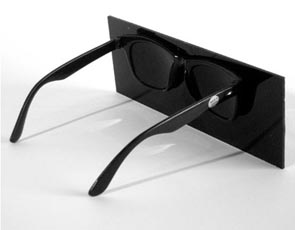Interview: Jona
The InAisce visionary on travel, texture and the nature of artistic collaboration

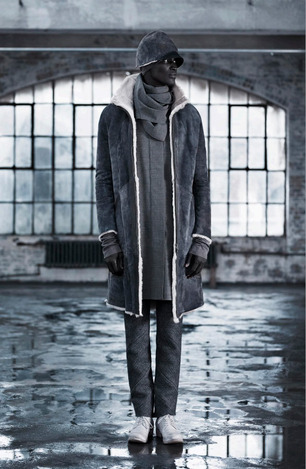
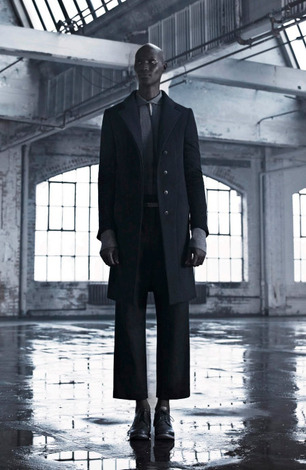
Invoking an anthropological spirit and aesthetic, New York-based designer Jona transcends the landscape of couture through his avant-garde label, InAisce. Imbued in signature hues of nuanced greys and arctic neutrals, InAisce aims to illustrate the ephemeral flux of nature and self in collections infused with a folkloric blend of tribal nomad and stoic sentinel.
InAisce began as a men’s collection in 2009, emerging from Jona’s desire to construct clothes for himself. The line’s sinuous draping and streamlined silhouettes, however, effortlessly melded into androgynous geometry, garnishing a unisex following and establishing InAisce as a transcendent force. Blurring the lines between sartorial ingenuity and mythical intrigue, InAisce explores “homelessness” as a transient quest in search of one’s origins with “Seeking Aether,” the brand’s upcoming Fall/Winter 2013/14 collection, comprised of collaborations with artisan Jason Ross of Artemas Quibble and shoe designer, Alessio Zero. Reflecting the ethos of the collection is South Sudanese refugee-cum-model Ger Duany, whose own epic journey makes him a natural fit.
We recently sat down with Jona at his Manhattan studio for a sneak peek at the new collection, which premieres at Taiss Galerie as a part of Paris Fashion Week this January before showing at Atelier New York in February alongside a site-specific installation by Dutch textile designer Claudy Jongstra.
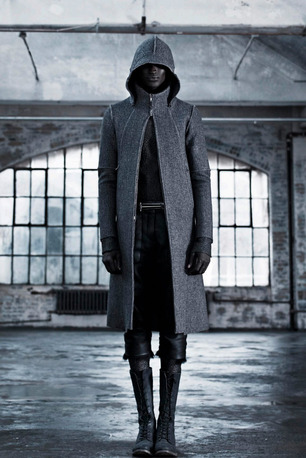
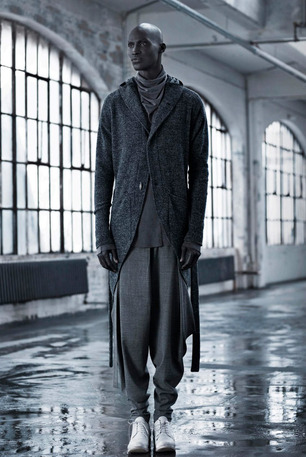
You were born in Colorado and lived in Japan, Taiwan and Indonesia. Have these locations inspired your work?
Sometimes, it doesn’t even really feel as if, in my life, I’ve had these experiences. For example, I don’t think I’m making this piece therefore I’m channeling some scenery from the Amalfi Coast. It happens naturally. What we see goes into our blood and comes out of our hands. I would like to explore Africa next and I have been listening to a lot of African music. I feel this pretty profound sense of origin of our species there, which I would like to explore.
What is the significance of the name InAisce?
I think that no matter what we do, if we don’t do it right, it’s “in vain”—fashion, especially. That’s why I came up with the name. That, and my family is Irish so I wanted to pay tribute to that. I think the vision for the brand came from just a sort of lifelong art endeavor. I’ve always been an artist and the story behind the brand has been where I’ve been channeling my creativity.
Who are some of your influences?
Fashion has been more of a business influence. I probably find more influence in music and architecture and nature; these formats that transport me. Fashion, because I’m so involved with it, can’t have that effect on me. Music can take me somewhere else and open my mind to creative possibilities. Architecture can do the same. When I walk into a place where there is a visionary behind the entire creation, I can lose myself. And nature, of course—the greatest design there is.
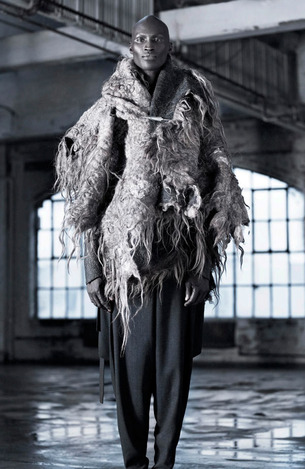
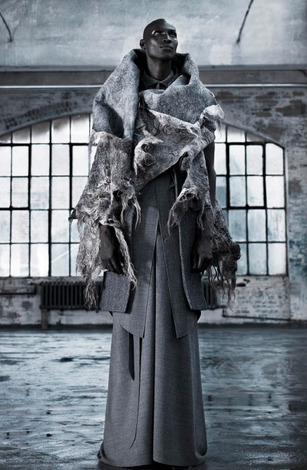
Your S/S 2010 collection dubbed “That Grows Above the Polis” incorporated organic elements. Which materials do you gravitate toward most and how do you initiate the production process?
I think that list is constantly evolving and refining. As far as compositions go, right now, I’m in a major wool phase. This past spring/summer, we used a lot of wool, which most people think of as a fall fabric but L.E. (Manuel) really turned me onto wool as a summer fabric because it’s breathable and it doesn’t smell.
In the past, I’ve used mostly Japanese wool and I still do, because I have a really good relationship with some small mills in Japan that do crazy things that nobody else even wants to do or knows how to do. This season, I wanted to incorporate some classic fabrications because I’m known for texture.


There is an exceptional amount of planning that happens in every step that we do. Our collections have a lot of pieces that interlock and there is a real balance and cohesion to it, which takes a lot of planning. There are a lot of unexpected things that happen so we try to always be five steps ahead.
What led you to collaborate with leather designer Jason Ross and shoe designer Alessio Zero?
The theme of my past collections has always revolved around solitude or an individual. This collection incorporates a lot more unity so I sort of felt compelled to not be so isolated because typically I’m such a control freak and really keep the collection close to us until we release it.
Jason is one of the people in New York, like myself, who is really going against the grain. He has a massive archive of antique objects and different things to base his hardware on. There were a couple of pieces that he said he thought it would be years before he would do anything with them. I went straight for those pieces. Part of the inspiration for the belts’ shapes were Spomeniks (old structures in Yuguslavia which were put up after the dissolution of the USSR). They’re these incredible structures, which are old and decaying but the actual shape is futuristic and looks like something out of Star Wars.
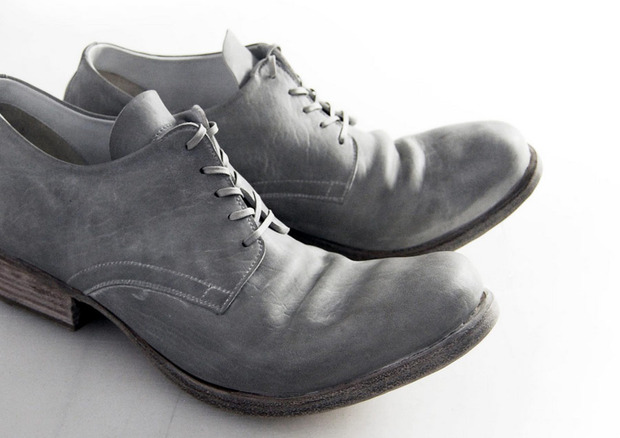
Alessio Zero has been making our boots for some time now but this last season, he approached me to do a collaboration. He’s very Italian and I’m very American, so we decided to try to bring the essences of Italy and America to the project. So, we based the project off of these logging boots. The shape has this old world American worker feel to it but the craftsmanship is ostensibly Italian. I really love the leather. It comes from a 120-year-old tannery in Italy called Guidi.
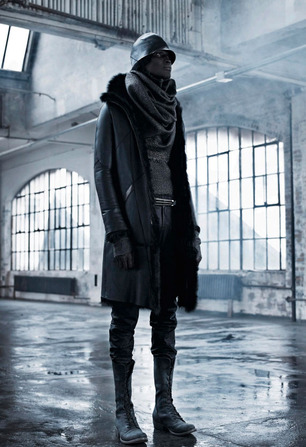
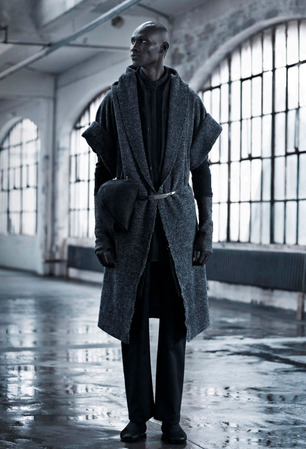
How did you connect with “Days of Gray” director Ani Simon-Kennedy and what did you contribute to the film?
I think that [Ani’s] first exposure to me was through Cool Hunting. When she came in, I saw that she had a really cool vision. For me, either we ignore something and we don’t do it or if we’re going to do it, we completely do it.
I really liked the concept and I wanted to be cohesive so I thought that we should offer as much as we could to the story. We contributed a lot of boots and pretty much took care of the footwear. I think just about all of the characters had something from us and there were a few characters that we completely outfitted, especially a lot of the outdoor, soldier characters. We also ended up doing a photo shoot at the same time they were filming in Iceland. It was really serendipitous.
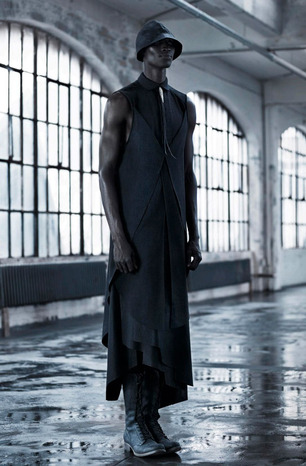
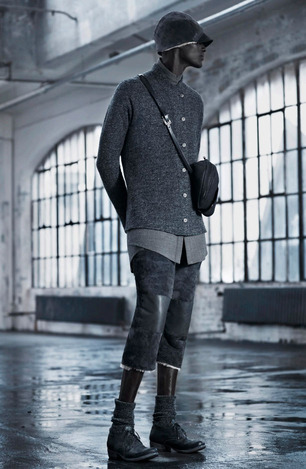
Tell us about your upcoming F/W 2013 collection debuting at Paris’ Galerie Taiss and your collaboration with Dutch textile artist, Claudy Jongstra.
That was the first collaboration that I started working on for this collection. I encountered her work randomly. It was one of those things that really transported me. When you look at some of the pieces closely, you really forget about the scale because there’s so much going on there. She does really big projects like stuff for Star Wars and she’s got something at the Lincoln Center.
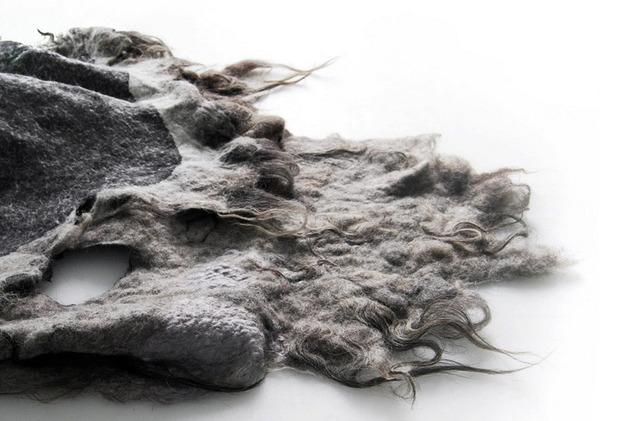
She raises her own sheep and she also grows her own dyes so it’s a self-sustainable system that she has. When I started having a dialogue with her, I thought that she represented something that I feel but I’m not really able to achieve being here in New York. Having planned the collection so much in advance, I was able to show her something about what we were doing and offer a little direction. Then, I pretty much let her interpret what I was doing. So she made three art pieces for us, which we’re going to sell in limited editions but it’s more for show. I think that if you’re going to collaborate with somebody, it shouldn’t just be with somebody who is the same as you but with somebody who complements you and completes your work somehow.
For more information visit InAisce online. Images courtesy of InAisce.
